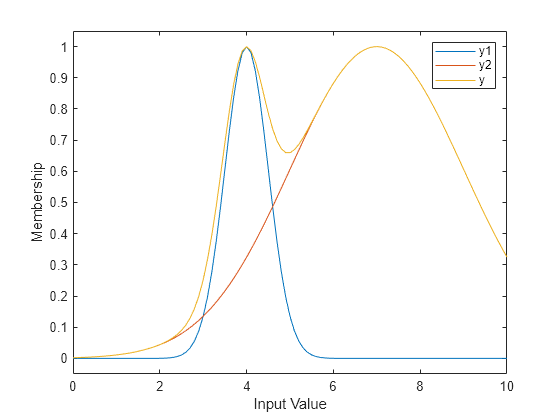probor
Probabilistic OR
Syntax
Description
y = probor(x)x.
Within the fuzzy inference process, the probor function is used as
either a fuzzy operator when evaluating rule antecedents or an aggregation operator when
combining the output fuzzy sets from all the rules.
